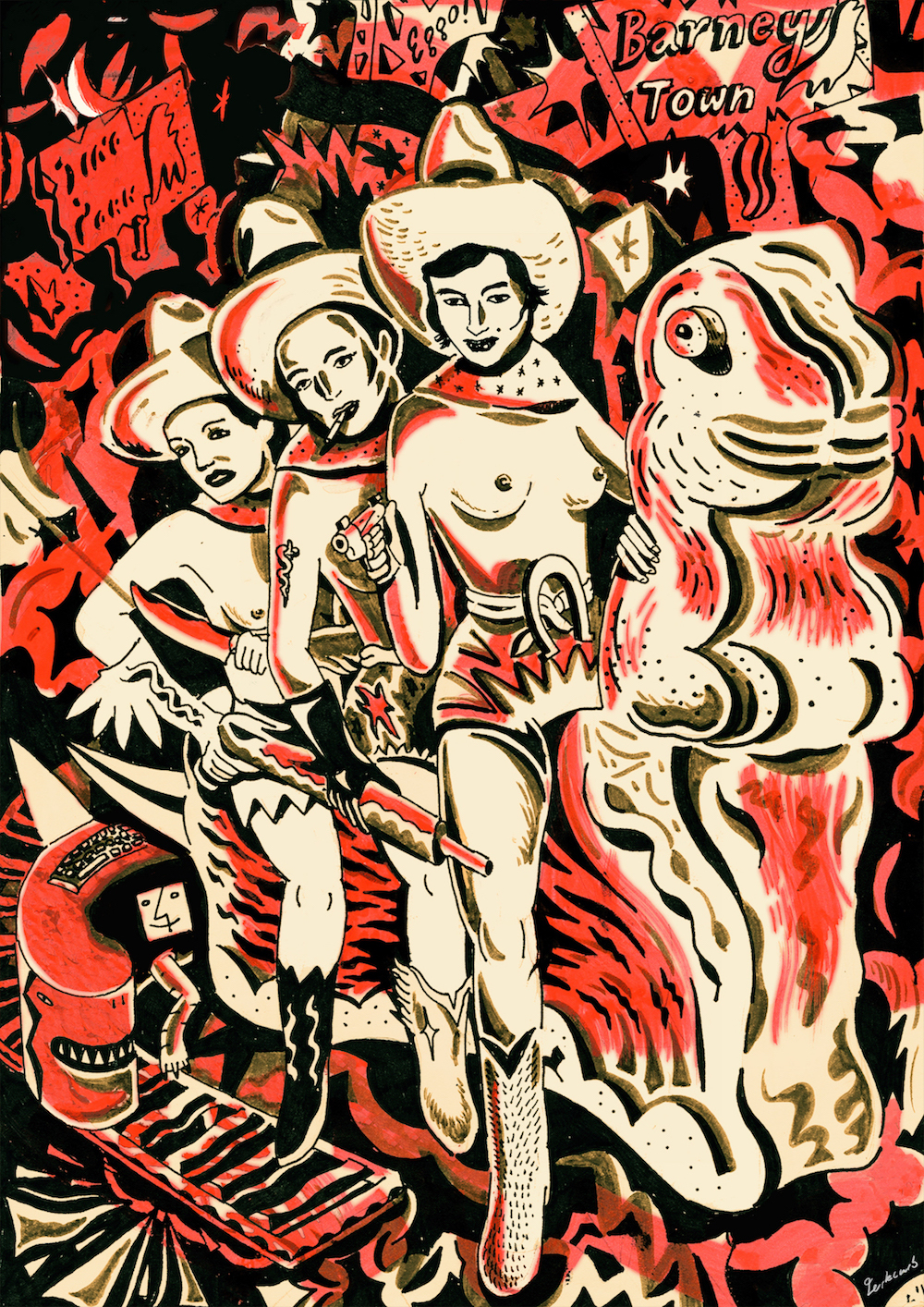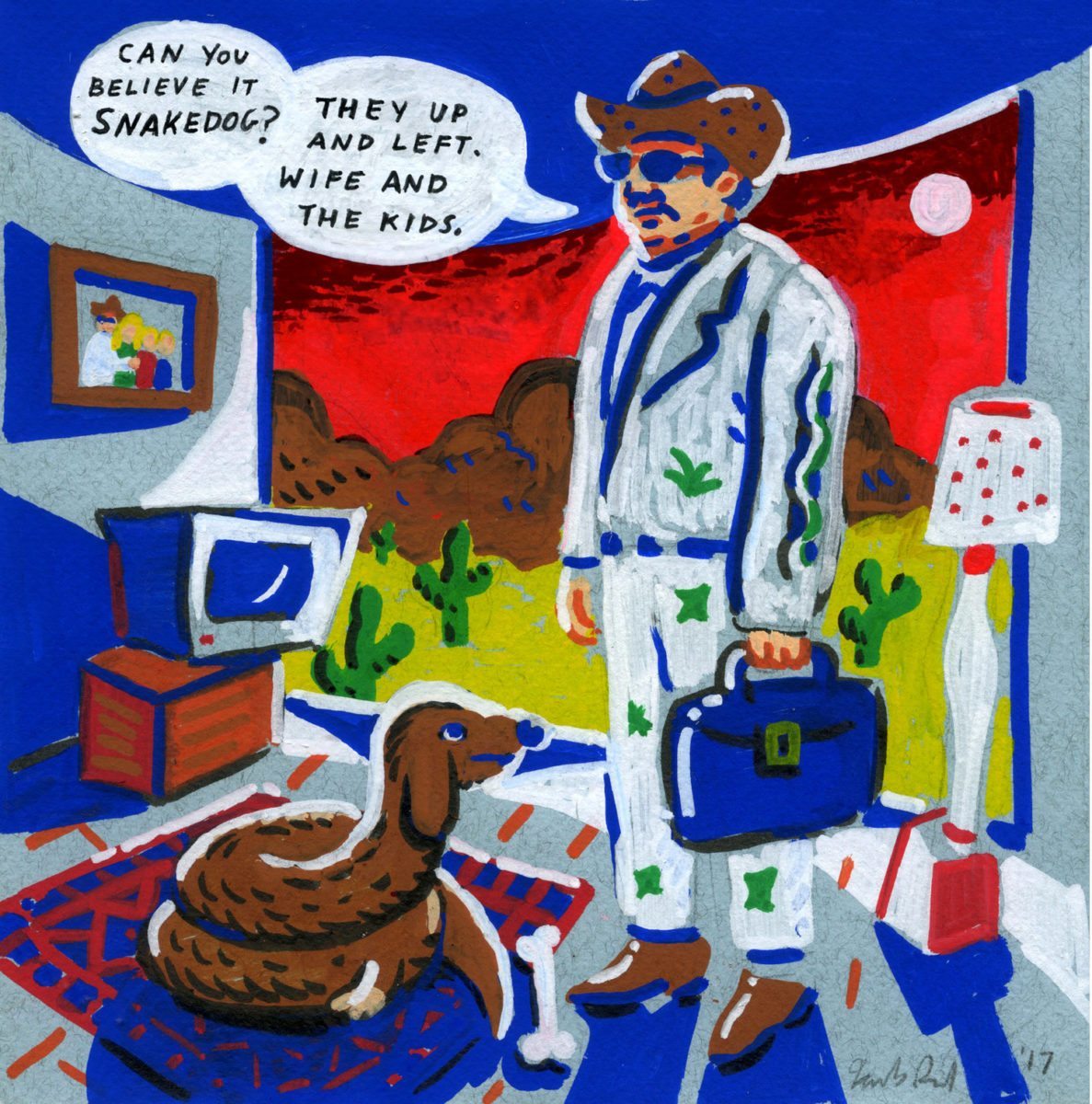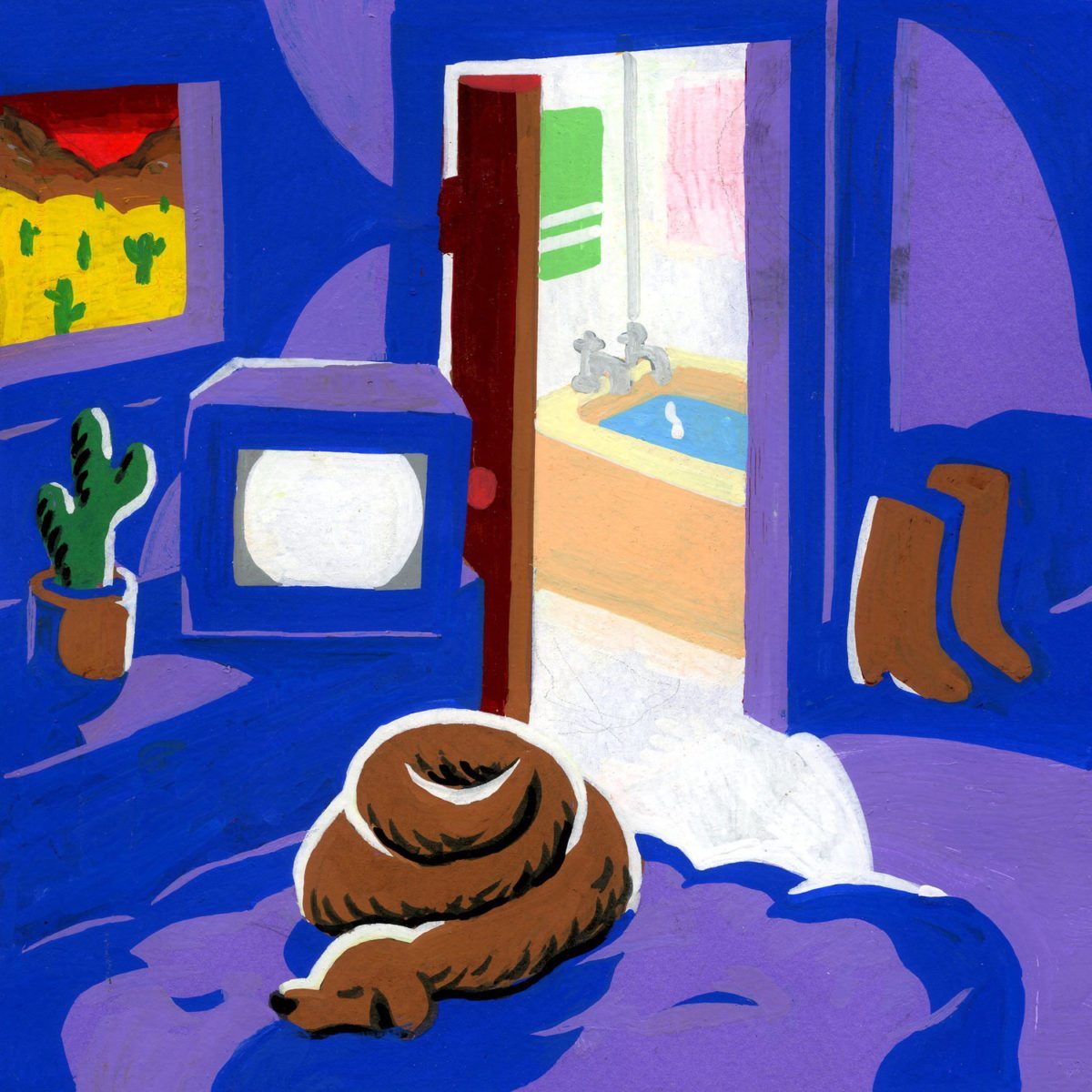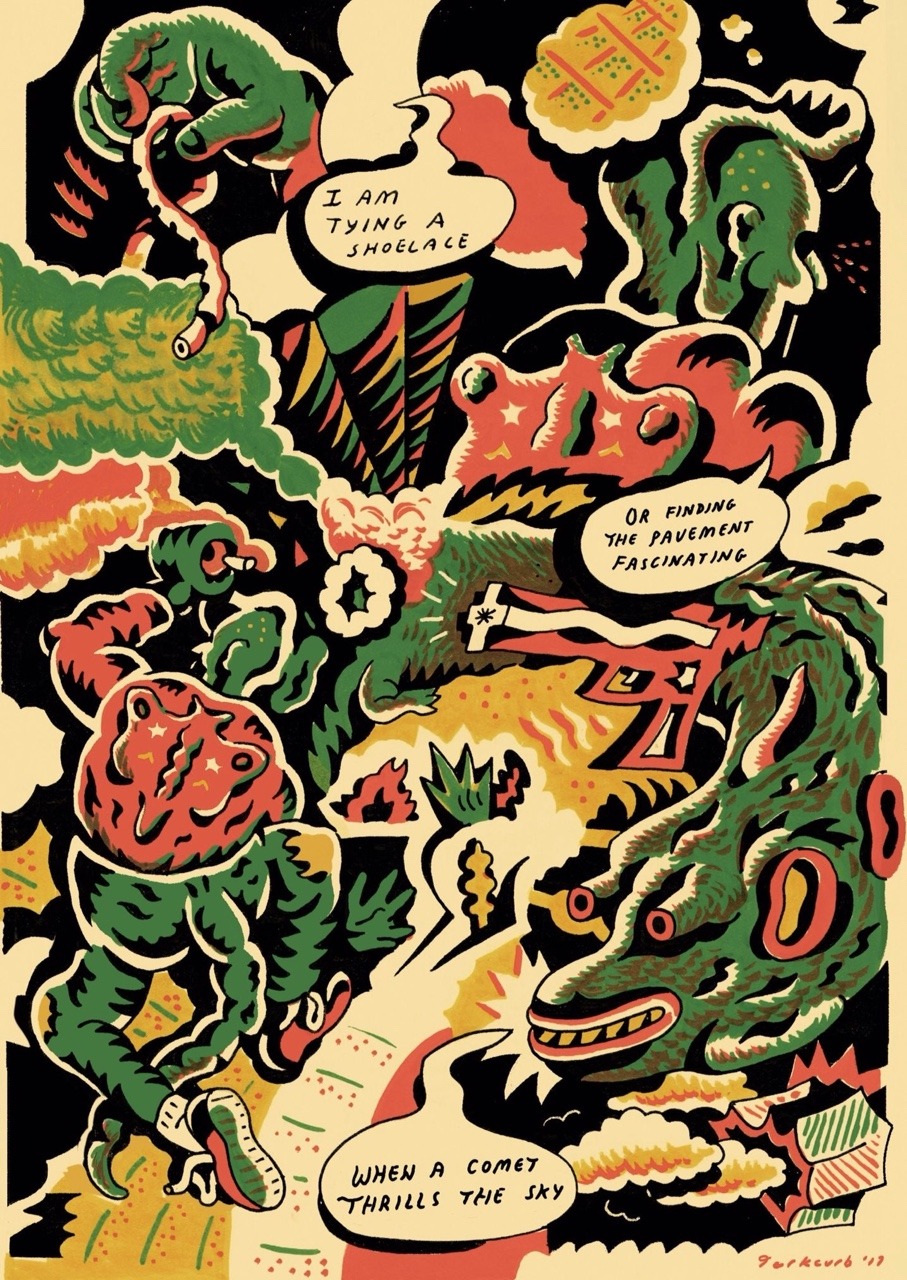
Jacob Read’s fluid and fantastical compositions of desert plants, solemn-faced figures and unidentifiable creatures seem to come from a dream world: one informed as much by comic books as family memories. He has illustrated for the Guardian and Vice, exhibited across London in group shows, and makes music solo as Jerkcurb and in his band Horsey.
Who are the characters in your drawings?
A lot of the time the setting is the initial character. I’m drawn towards non-places: interiors of shopping malls, waterparks, hotel foyers, relics of twentieth-century consumerism. I love the juxtaposition of grandeur and decay. It provokes a mixed reaction from me, somewhere between happy and sad, fascination and disgust.
The characters are more spontaneous. Sometimes anthropomorphic, but usually bedded in reality. I draw a lot from images I collect. Postcards, books, the internet. I look for interesting poses, a range of forms, clothes, ages, eras. I guess overall I like to feel compassion towards the character, an understanding, a reflection of myself.
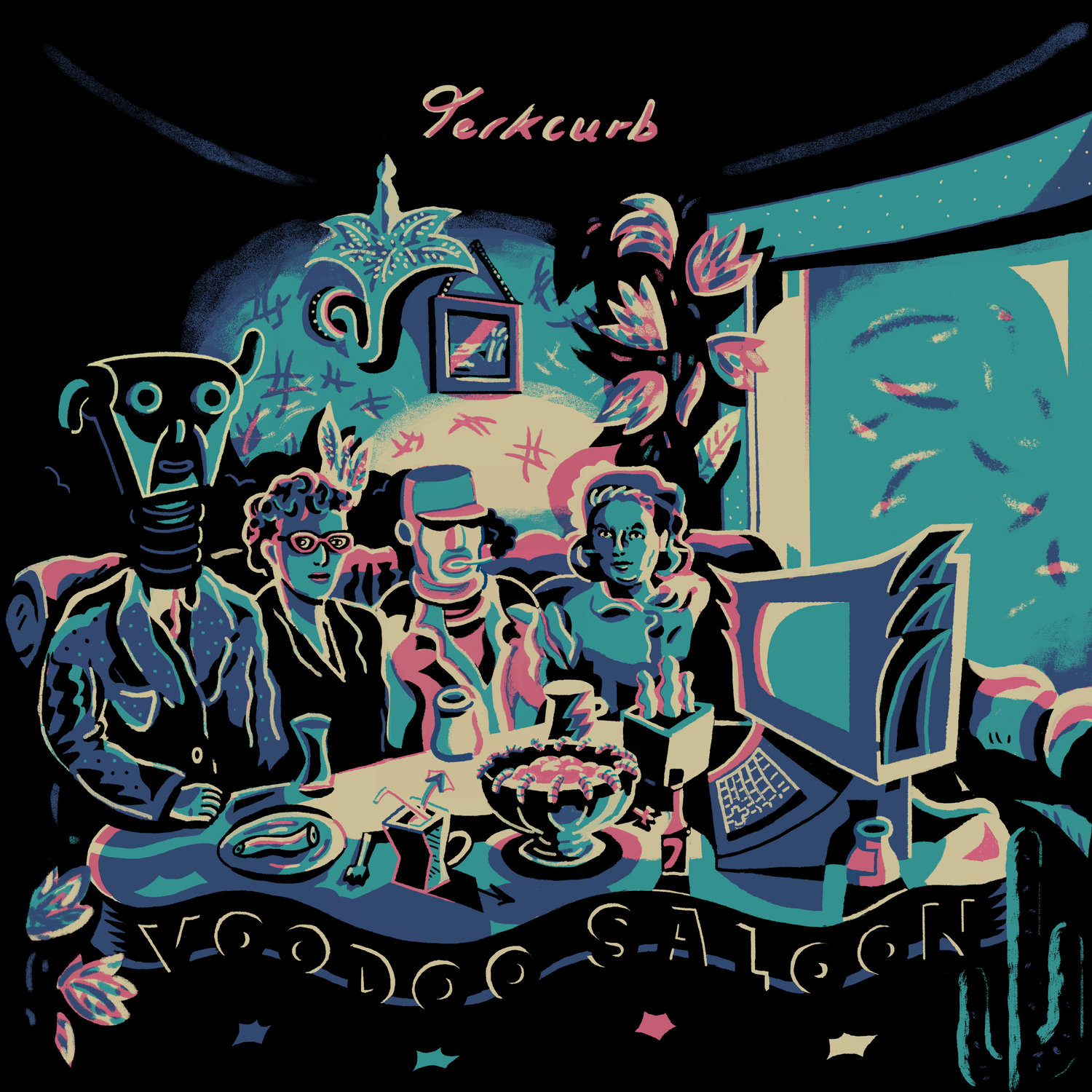
You live and have grown up in South London, yet your work has a very American feel to it. What is your personal and aesthetic relationship with America?
I take my everyday surroundings for granted. Growing up here, I sometimes feel it’s hard to find inspiration in things I see every day. A big cliche, but I use art and music as an escape, a transportation device; a place entirely removed from my life that provokes a guttural reaction. I believe this is called false nostalgia.
“I take my everyday surroundings for granted. Growing up here, I sometimes feel it’s hard to find inspiration in things I see every day.”
My family are New York Jews, they moved over to England in the late eighties. A lot of the Americana feel comes from old stories, memories, summer vacations. So it’s not all “false”. I like to think it could have been my life if I was born in a different era.
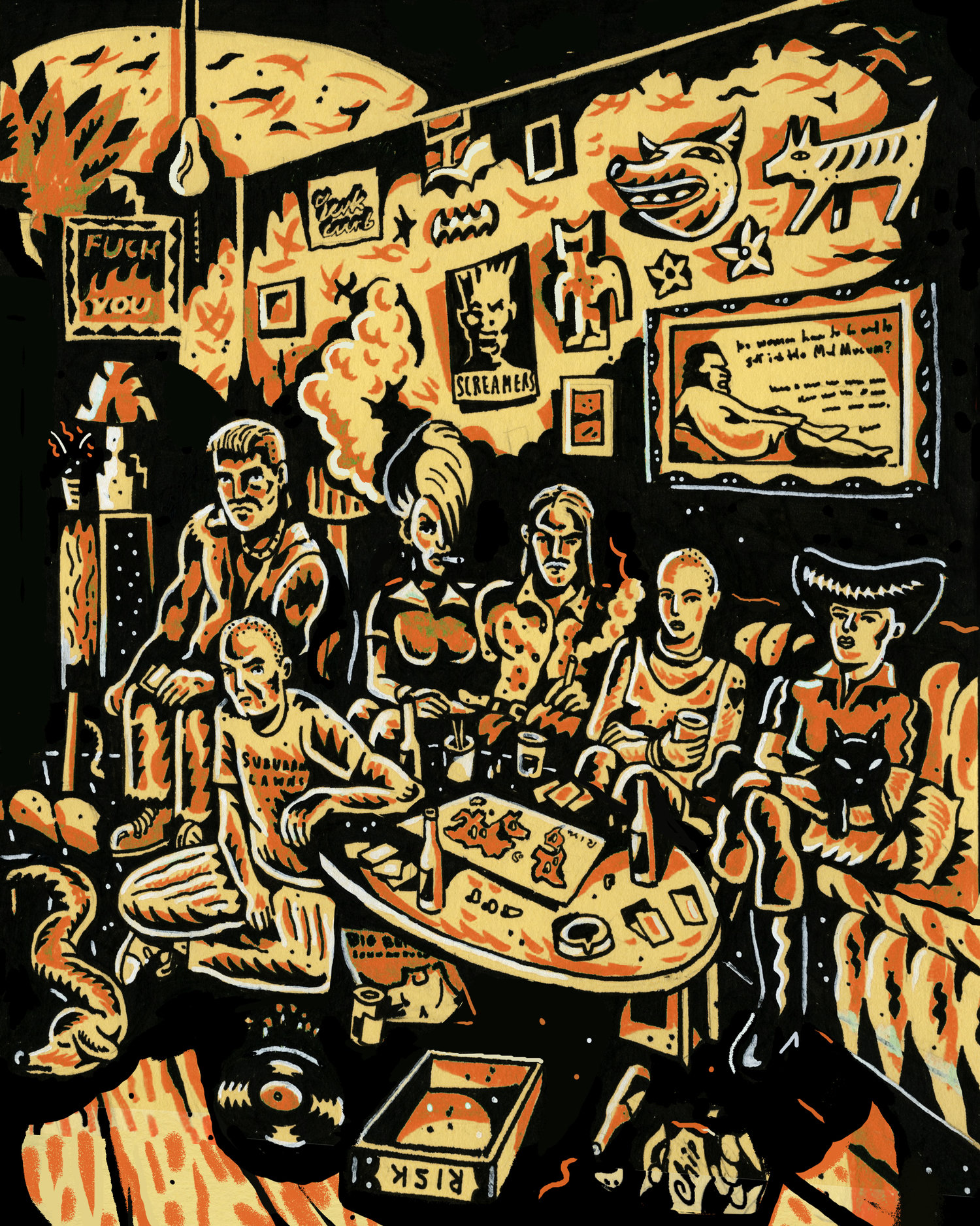
As well as being a visual artist, you are also a musician—as Jerkcurb, and in your band Horsey. How have these practices informed each other? Do you consider them very separate things or do they exist in the same space in your mind?
There is some separation between Jerkcurb and Horsey, as one is purely a solo project and the other is a collaborative group. The style of the music differs a lot because of this, from sad/introverted to bold/extroverted.
I have never been academic or good at sports. So art and music was always my passion. That passion has manifested in various forms over the years, but they are all extensions of what I love doing and probably the only thing I fully feel comfortable in.
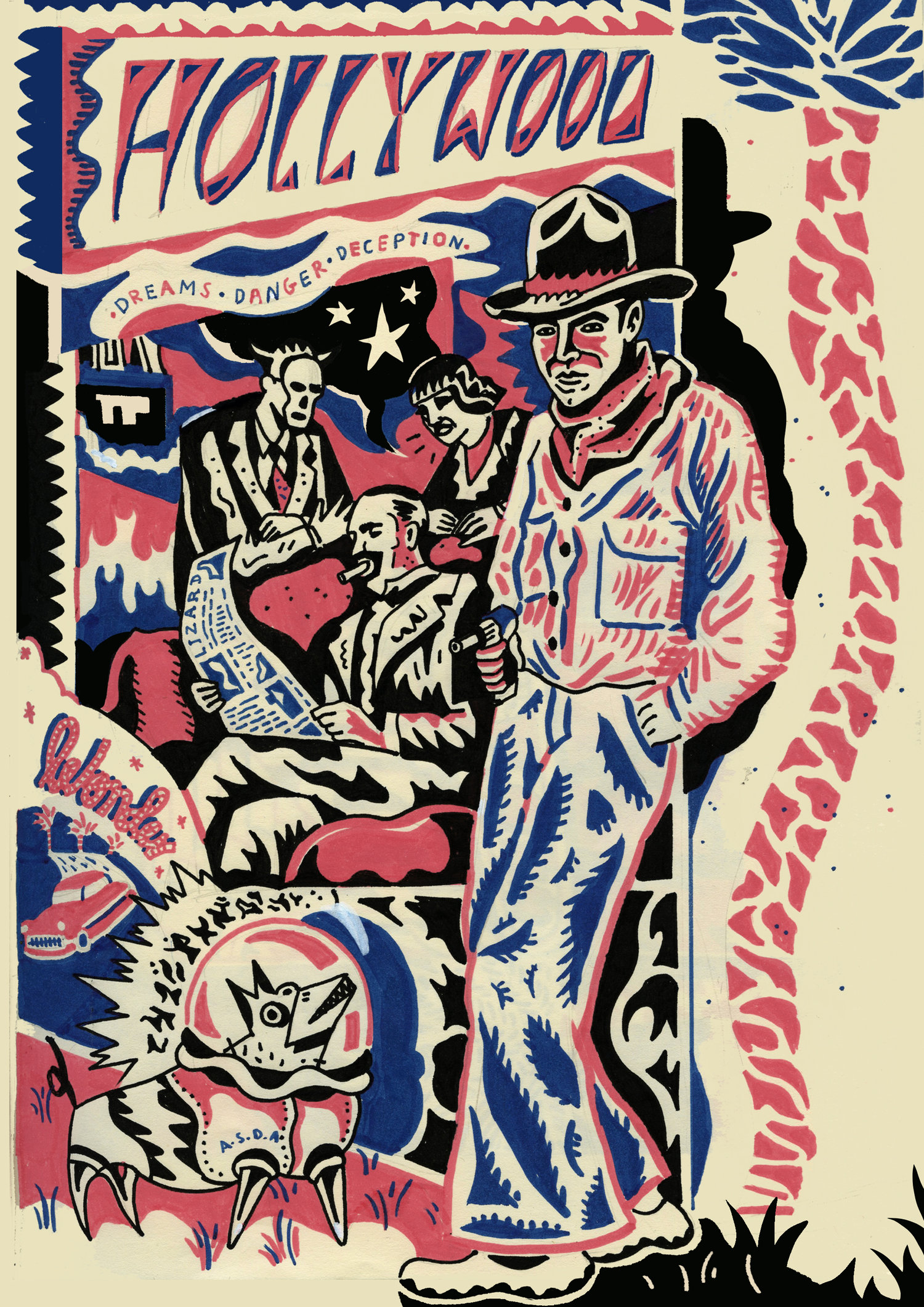
Did you grow up reading a lot of comic books? Which have been most influential to you?
Batman was the first comic I loved growing up, I didn’t connect with The Beano or Tintin or anything like that. I was drawn to the dark world of Batman. Especially the comic The Killing Joke, and the Bruce Timm art-directed Animated series, which has a subtle art deco feel. It wasn’t really the superhero element, it was the whole package, the “world” that it inhabited.
When I was ten my dad bought me an R Crumb anthology and that really changed my perspective. The drawing initially, then the humour, the crudity. It felt very real, raw and expressive. Later I discovered Daniel Clowes and the next generation of American comics. My mum showed me The Hairy Who (Chicago Imagists). She was really into them when she was at art school, and they have been a consistent inspiration; playful and unpredictable, alienating and inviting. I love the work of Christina Ramberg, Jim Nutt, Karl Wirsum, Sally Cruikshank and HC Westermann. Also, my father is an oil painter so I take a lot of influence from his practice. I take inspiration from many places!
- Snakedog, 2017
Where would your ideal place be to exhibit?
A climate-controlled environment like the Palm House at Kew Gardens. The work would be intercepted with nature and I would make a soundtrack to fill the space.
I’m fascinated with the story of the Austrian architect, Victor Gruen. He thought that man was stuck in a war between nature and technology, so in the mid-twentieth century he invented a climate-controlled natural environment in America. These indoor environments, similar to the Palm House, were devoted to flowers, trees and wildlife.
It was later suggested that he should make a gift shop, where visitors could take souvenirs home with them. This eventually led to the invention of the shopping mall as we know it today, and the “nature” aspect quickly diminished, and became secondary to the prospect of retail profit.
The optimist in me believes this story. That this horrendous vessel for consumerism stemmed from an act of kindness, the desire for a better world. It’s completely false, but the message fascinates me. Life is not one thing or the other.
